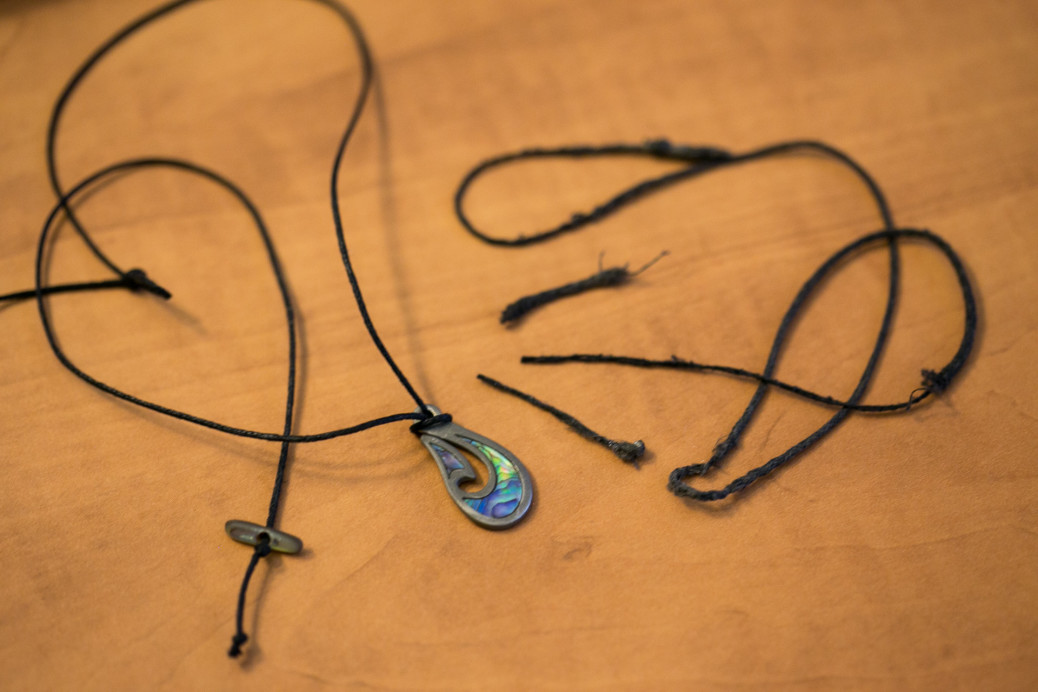Today, my class at Weill Cornell finished our pre-clinical coursework, traditionally the first half of medical school. That’s quite the milestone, isn’t it? After winter break, most of us (including me) will retreat into our study caves and prepare for our Step 1 board exam. We’ll then reemerge to start our clerkships in Febuary 2016, the beginning our time learning and working on hospital floors. Wut.
Also today, I noticed that the cord for my pendant had nearly torn through. I’ve restrung it, but then I got sadly nostalgic. The pendant is a steel fishhook symbol with inset abalone shell, a cheap souvenir I got in New Zealand 11.4 years ago and — aside from two breaks — I’ve worn it continuously since then.
To the Maori people, the fishhook symbolizes strength, good luck, and safe nautical travel. To me, it symbolizes… a few things. I started wearing it to remind myself to keep moving forward, to seek growth and embrace change. Perhaps the hook could serve as an anchor when I strove to become more sociable, amicable, and skillful. Back then in 2004, it really gave me some strength. I’d think about the pendant before I stepped on stage or when I was taking a difficult test. I often toyed with it absentmindedly too, spinning the cord around, stretching it on my chin, wrapping it around my fingers.
My pendant has gone onstage for every single performance I’ve played since high school, tucked away under a dress shirt. From the meek back of the seconds in OYO, to tuning the orchestra in my high school gym, to playing Music & Med in Lincoln Center and Carnegie Hall (which is still crazy).
My pendant has flown with me all around the world. When sleeping on airplanes, I hang my glasses on it. It’s not ferromagnetic, so it doesn’t bother metal detectors, but sometimes millimeter wave scanners notice it.
My pendant has been one of my most valuable possessions for a long time. August 2004. 11.4 years. The pendant is older than my screenname, ravenguild08. It predates all my Rubik’s cubes, my camera, all the laptops and cellphones I’ve owned. I had it before I started high school, before I moved to the east coast, before I thought about growing up.
Sadly, years later, I hardly think about my pendant now. I just wear it. Occasionally when I’m running, I’ll spin it backwards so it doesn’t bounce and bruise my suprasternal notch. Oh how times have changed.
I’m going to stop wearing it in February. When my dad was teaching me to suture, he told me that he prefers monofilament stitches for some sites because the grooves between strands in braided materials can serve as a nydus for infection. Now, looking at this frayed nylon cord, I’m thinking of all the staphylococcus epidermidis and its skin flora friends piggybacking between patient rooms. Scrubs are washed, shoes are below waist level, hair gets covered, skin is washed, but my pendant will just hang around accumulating pathogens. Like those decorative lengths of silk we let dangle in front of us all the time but never launder (neckties), my little pendant is now a legitimately dangerous object. Therefore, after Step 1, off it comes.
I wonder what 13-year-old Peter would think of the 25-year-old Peter who’s still wearing his pendant. He probably wouldn’t think that hospital bacteria would be the ultimate reason I’d stop wearing it 11.5 years later, but alas, I hope I’ve done him proud.
